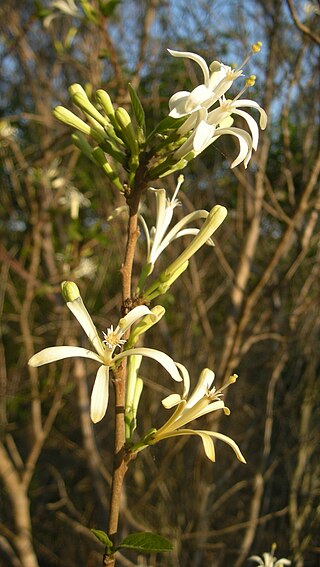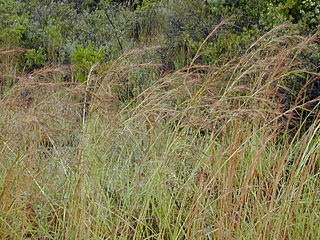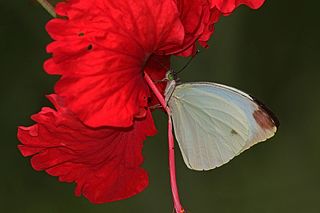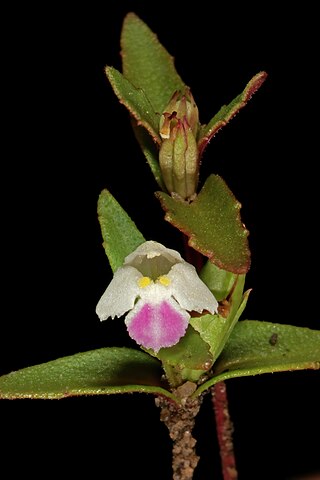
Kniphofia is a genus of perennial flowering plants in the family Asphodelaceae, first described as a genus in 1794. All species of Kniphofia are native to Africa. Common names include tritoma, red hot poker, torch lily and poker plant.

The Sapotaceae are a family of flowering plants belonging to the order Ericales. The family includes about 800 species of evergreen trees and shrubs in around 65 genera. Their distribution is pantropical.

Chrysophyllum is a group of trees in the Sapotaceae described as a genus by Linnaeus in 1753.

The individual member states of the African Union (AU) coordinate foreign policy through this agency, in addition to conducting their own international relations on a state-by-state basis. The AU represents the interests of African peoples at large in intergovernmental organizations (IGO's); for instance, it is a permanent observer at the United Nations' General Assembly.

Aneilema is a genus of monocotyledonous plants of approximately 60 species. The vast majority of the species are native to sub-Saharan Africa, but a few are found in Oceania and one, Aneilema brasiliense, is from South America. It is the third largest genus in the family Commelinaceae after Commelina and Tradescantia, and it is one of only six genera in the family to occur in both the Eastern Hemisphere and the Western Hemisphere.

Mimusops is a genus of plants in the family Sapotaceae, described as a genus by Linnaeus in 1753.

Turraea is a genus of plants in the family Meliaceae, native to the Old World tropics and subtropics.

Hyparrhenia is a genus of grasses. Many species are known commonly as thatching grass.

Microcoelia is a genus of orchids native to sub-Saharan Africa as well as to Madagascar and other islands of the Indian Ocean.
- Microcoelia aphylla(Thouars) Summerh. - from Kenya and Uganda south to KwaZulu-Natal, plus Madagascar, Mauritius and Réunion
- Microcoelia aurantiaca(Schltr.) Summerh. - Madagascar
- Microcoelia bispiculataL.Jonss. - Madagascar
- Microcoelia bulbocalcarataL.Jonss. - Príncipe, Cameroon, Gabon, Uganda, Rwanda
- Microcoelia caespitosa(Rolfe) Summerh. in J.Hutchinson & J.M.Dalziel - western and central Africa from Liberia to Zaïre and Uganda
- Microcoelia corallinaSummerh. - Tanzania, Mozambique, Malawi
- Microcoelia cornuta(Ridl.) Carlsward - Madagascar, Comoros
- Microcoelia decaryanaL.Jonss. - Madagascar
- Microcoelia dolichorhiza(Schltr.) Summerh. - Madagascar
- Microcoelia elliotii(Finet) Summerh. - Madagascar
- Microcoelia exilisLindl. - from Kenya and Uganda south to KwaZulu-Natal, plus Madagascar
- Microcoelia gilpinae(Rchb.f. & S.Moore) Summerh. - Madagascar
- Microcoelia globulosa(Hochst.) L.Jonss. - from Nigeria east to Eritrea, south to Angola and Zimbabwe
- Microcoelia hirschbergiiSummerh. - Zaïre, Zambia
- Microcoelia jonssoniiSzlach. & Olszewski - Central African Republic
- Microcoelia koehleri(Schltr.) Summerh. - from Nigeria to Tanzania, south to Zimbabwe
- Microcoelia konduensis(De Wild.) Summerh - western and central Africa
- Microcoelia leptostele(Summerh.) L.Jonss. - Central African Republic, Zaïre
- Microcoelia macrantha(H.Perrier) Summerh. - Madagascar
- Microcoelia macrorhynchia(Schltr.) Summerh. in J.Hutchinson & J.M.Dalziel - central Africa
- Microcoelia megalorrhiza(Rchb.f.) Summerh. - Kenya, Tanzania, Malawi
- Microcoelia microglossaSummerh. - central Africa
- Microcoelia moreauaeL.Jonss - Kenya, Tanzania, Zimbabwe
- Microcoelia nyungwensisL.Jonss. - Rwanda
- Microcoelia obovataSummerh. - from Kenya south to KwaZulu-Natal
- Microcoelia ornithocephalaP.J.Cribb - Malawi
- Microcoelia perrieri(Finet) Summerh. - Madagascar
- Microcoelia physophora(Rchb.f.) Summerh. - Kenya, Tanzania, Madagascar
- Microcoelia sanfordiiL.Jonss - Cameroon
- Microcoelia smithii(Rolfe) Summerh. - Kenya, Tanzania, Malawi
- Microcoelia stolzii(Schltr.) Summerh. - Kenya, Tanzania, Malawi, Mozambique, Zambia, Zimbabwe

Andronymus neander, the common dart or nomad dart, is a butterfly of the family Hesperiidae. It is found in tropical Africa. The habitat consists of moist woodland, forest margins and riparian vegetation, from sea level up to altitudes of 2,400 metres.

Nepheronia argia, the large vagrant, is a butterfly of the family Pieridae. It is found throughout Africa.

Eurytela dryope, the golden piper, is a butterfly of the family Nymphalidae, found in Sub-Saharan Africa, the Arabian Peninsula and Madagascar.

Englerophytum is a group of trees in the family Sapotaceae described as a genus in 1914.

Cyphia is a genus of flowering plants in the bellflower family, native to Africa; and particularly South Africa. It has been placed in its own subfamily, Cyphioideae. It is closely related to the genus Lobelia.Cyphia comes in shades of white to mauve, whereas lobelias have strong colours of blue to purple. Species in this genus have a bilabiate corolla; with 3 lobes on top and 2 below.
Lefebvrea is a genus of flowering plants belonging to the family Apiaceae.
Gambeya is a genus of flowering plants belonging to the family Sapotaceae.

Linderniella is a genus of flowering plants belonging to the family Linderniaceae.

This is a list of the Angola national football team results from 2000 to 2019.















